By SYDNEY J. FREEDBERG JR.
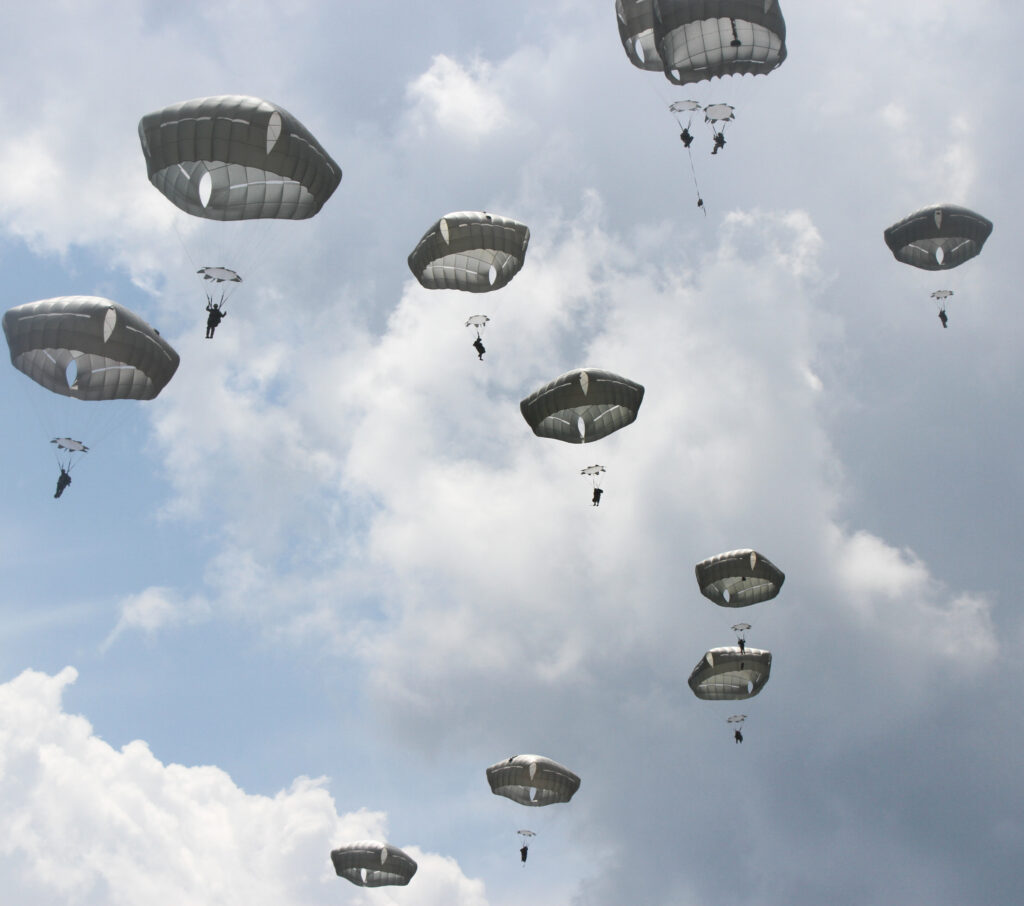 Since World War II, every airdrop has been a well-armed leap of faith into the unknown. A new tactical wireless network could change that.
Since World War II, every airdrop has been a well-armed leap of faith into the unknown. A new tactical wireless network could change that.
82nd Airborne paratroopers practice an airdrop.
WASHINGTON: From D-Day to today, every time a parachute unit hits the ground, it shatters. A well-ordered formation breaks apart into individuals, strewn across the landscape and unsure of where their comrades and commanders have landed. Leaders race to reform a fighting force before the enemy can pick the scattered paratroopers off.
Now the famed 82nd Airborne is testing to see how much faster could that force form up and move out if paratroopers could see each others’ locations in real time on a digital map. What new tactics would become possible?
”Right now, to gain accountability, I touch a kid on the shoulder and say, ‘oh, there you are.’ And when I’ve touched 4,400 of them, I know the brigade’s assembled,” said Col. Andrew Saslav, who commands the 1st Brigade of the 82nd Airborne Division.
Yes, drones, satellites, and datalinks have dramatically improved the amount of information available today to static command posts and troops in vehicles. But more advanced communications systems have been too bulky and too hungry for electricity for paratroopers, still relying on backpack push-to-talk radios. “It hasn’t changed much for the dismounted infantryman since World War II,” Saslav said.
But that is changing. The new Integrated Tactical Network kit recently issued to one of Saslav’s battalions “is revolutionary,” he told me. “We’re not evolving anything. It’s a revolution.”
The 1st Battalion, 508th Parachute Infantry Regiment got an early version of the ITN, much of it off-the-shelf commercial tech, and took it through months of training and multiple major exercises. Then the regiment deployed with it to Afghanistan earlier this year. That means the 1/508th is testing the new network in actual combat, even as the service works on an upgraded version to go to the entire brigade and, ultimately, all the Army’s light infantry units as part of what’s called Capability Set 21.
One of the 1/508th battalion’s officers, Capt. Brian Delgado, is now Salsav’s communications chief for the whole brigade (the S-6). Clausewitz famously compared warfare to two men wrestling in the dark, Delgado told me, but with the 82nd’s old communications system, “it was more like wrestling in the dark when you don’t really know where your hands and your feet are all the time.”
With the new ITN, which provides a souped-up Samsung Galaxy to leaders at every level down to the four-man fire team, “that commander at all times knows exactly where his hands and his feet are,” Delgado told me. “Hopefully, we’ll eventually get to the point with IVAS” – smart goggles now in testing that will go to every infantry soldier – “where we know all the fingers and toes are too.”
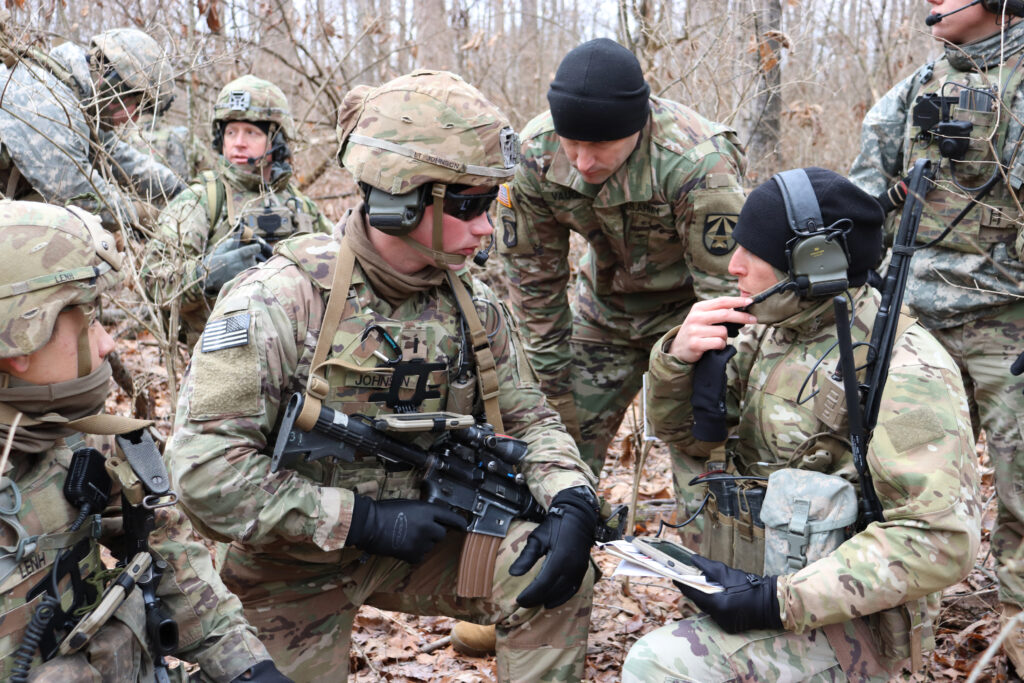 The 1st Battalion, 508th Parachute Infantry Regiment try out an early version of the Army’s Integrated Tactical Network (ITN) in wargames.
The 1st Battalion, 508th Parachute Infantry Regiment try out an early version of the Army’s Integrated Tactical Network (ITN) in wargames.
Knowing Is Half The Battle
Do commanders really need to know the location of every private? “In the chaos of an airborne assault, I actually do care about where individuals are,” Salsav said. Today, for instance, he can’t call in artillery or airstrikes too close to the landing zone for fear they’ll hit stray paratroopers he hasn’t accounted for yet. With IVAS goggles on every soldier, he could call in heavy firepower even in the first critical, vulnerable minutes after hitting the ground and not have to worry about friendly fire.
Better communications don’t only allow the Airborne to do the same thing faster, Saslav said: They allow entirely new tactics.
An Air Force C-17 jet transport lands on an ad hoc airstrip.
“Right now, we try to jump consolidated,” he told me. “I want to put as many members of this brigade on a single piece of terrain as possible.” In other words, you drop the entire brigade in the same location to make it easier to link up. But if you’re already linked virtually as soon as you hit the ground, he said, “I can spread out.”
Instead of one big drop from lots of vulnerable transport aircraft, which require blasting a wide path through enemy air defenses, you could do several small drops from a few planes and exploit smaller holes in the enemy defensive system. Instead of a brigade or battalion hitting the ground in one place, getting organized, and moving out against multiple objectives, you can hit each objective at once, giving the enemy less time to respond.
Even after the initial landing, Saslav said, the new network lets the troops spread out more without losing the ability to support each other, because it has longer range than the current FM radios. “Right now, I’d say the problem is, not how fast I can move,” Saslav said. “It’s, ‘can I communicate far enough?’”
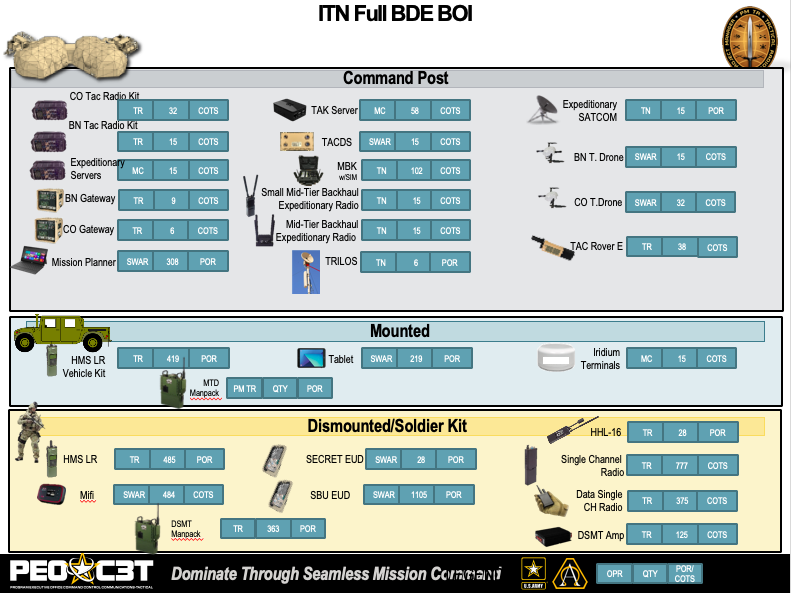
An Army slide summing up the systems being issued as part of the Integrated Tactical Network. Note the mix of Commercial Off The Shelf (COTS) and military-unique Program Of Record (POR) technologies.
Currently, the brigade has to send out specialist FM transmission teams to relay messages to keep units in contact when they’re separated by distance or radio-wave-blocking terrain like hills or buildings. Those teams have to set up on high ground to ensure unobstructed transmissions, where they then start pumping out lots of radio signals. That makes them easy for an enemy to find and kill, as the Russian have shown in Ukraine. And the brigade doesn’t have many retrans teams. Only battalion commanders and above have any.
By contrast, every company in the new network will get its own relay drone. Because long-range radios are bulky and power-hungry, these drones aren’t portable systems. They have to be carried on the company commander’s vehicle – typically a Polaris MZR or DAGOR air-dropped in with the first wave to carry special equipment – which is also the only vehicle in a standard rifle company. Even in flight, the drones need an electrical umbilical cord back down to that vehicle to draw power, so they can only fly in circles, tethered to a specific location. But they don’t have to set up on high ground, since they’re effectively instant radio towers.
An 82nd Airborne soldier drives a Polaris MRZR.
When the 1/508th tested an earlier, bulkier version of the drone, it “greatly enhanced our ability to extend our mesh network,” Delgado said. That meant forward units could push forward aggressively and remain in touch.
Longer range communications are even more important on the brigade level. Saslav has a whole battalion of scouts (called a cavalry squadron), but today he can’t send them out very far before they are no longer able to report back to him, which defeats the point of doing reconnaissance. With the new network, he said, he’ll be able to push his scouts out farther, allowing them to find the enemy faster. That, in turn, gives the rest of the brigade more warning time to attack, dig in or evade.
Longer range also helps link the brigade to supporting units, like AH-64 helicopter gunships. Today, “unless they’re within FM range of one of my command posts, they’re going to be hard for us to talk to,” Saslav said. But ITN lets a frontline platoon leader, for instance, talk to the gunship pilot “the entire time that Apache is moving through my battlespace… from the minute he gets wheels up.”
The new network even makes it easier to talk to foreign forces with incompatible equipment. They just need to loan one of their radios to the Airborne, who plug it into a kind of converter called a “TRIK box” – Tactical Radio Integration Kit — that can transmit and receive on both nation’s networks. (This works with virtually any radio because they all turn radio waves into sound – otherwise the user couldn’t hear anything – and the TRIK box can then turn that analog sound into digital signals for the US network, and vice versa). The original version that the 1/508th used was suitcase-sized and only available to battalion command posts, but the Army’s working on a more portable model to issue to every company.
Keeping It Light
Keeping the tech light is critical to a unit that moves mostly on foot. So is making it easy to use and to maintain. While the brigade has its own Forward Support Battalion, it has nowhere near the deep bench of mechanics and technicians that an armored or helicopter unit has. Adding that many personnel and all their gear would make the brigade much bulkier and slower to deploy, defeating the point of a light infantry unit.
“Is the equipment going to the right echelon?” Saslav said. “Do we have the technological capability to maintain it?”
“As the brigade commander, this is one of my No. 1 concerns, [and] when I sat down with the entire ITN team, it’s one of the things they asked me to pay the most attention to,” Saslav said. “I don’t want to … have to give the rifle platoon a vehicle and a trailer and a generator.”
Nor does Saslav want his paratroopers to become dependent on technology, not when hacking, jamming and ordinary breakdowns can take it away.
“In everything we do, we have to take into consideration what happens when that technological advantage is denied to us, for whatever reason,” Saslav said. That means training in “basic skills” like using map, compass, and human contact.
“As advanced as we get, I still say the infantry’s a hands-on business,” he said. “Sometimes you just need to put your hand on somebody’s shoulder and have a conversation eye to eye.”
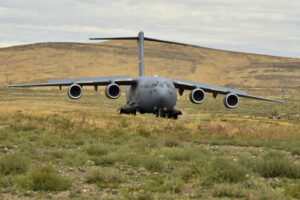
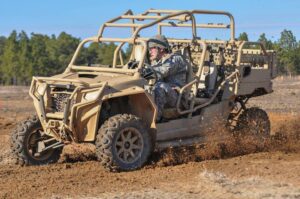
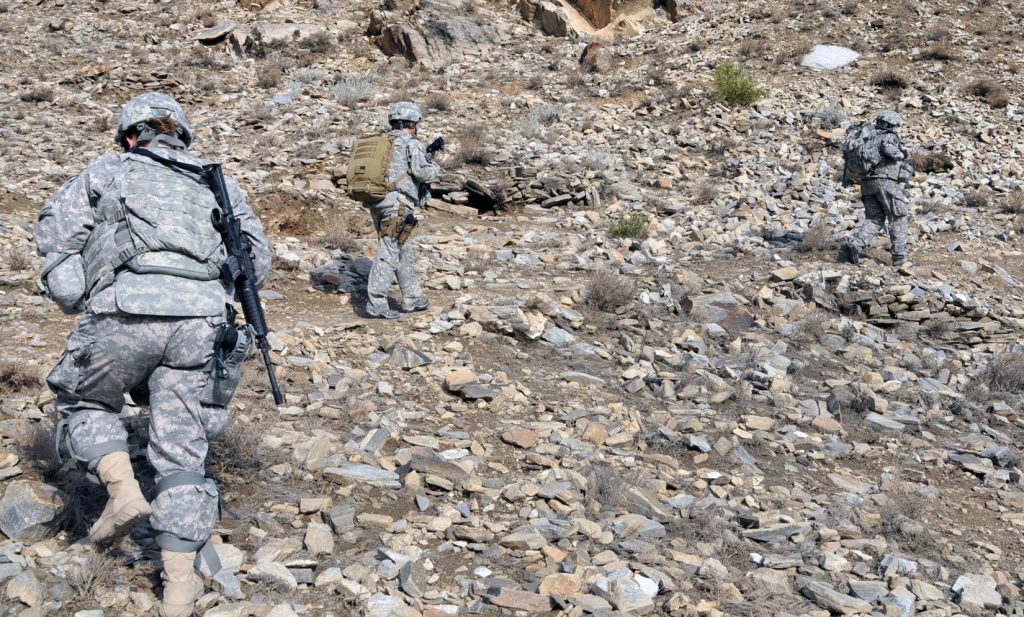
No comments:
Post a Comment